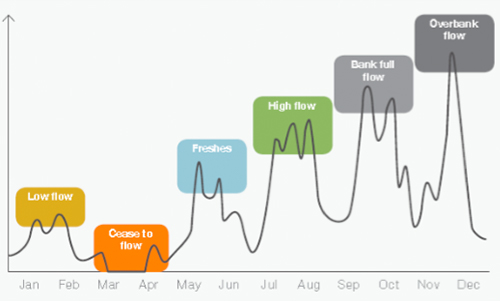Instead of flowing naturally, with high flows in winter and low flows in the hotter months of summer, rivers now run higher when water needs to be delivered for farming and urban use. These changes have interrupted many of the natural river and wetland processes needed by native plants and animals to survive, feed and breed.
Water for the environment is released into some of these rivers and wetlands to improve their health and protect environmental values.
In rivers, water for the environment can be delivered to mimic some of the flows that would have occurred naturally before rivers were modified.
Water for the environment does not try to return rivers and wetlands to their pre-European condition. Many rivers and wetlands are so modified that this is not feasible; however environmental watering can help to minimise some of the impacts of these modifications on rivers and wetlands.
Managers of water for the environment generally focus on returning some of the small and medium-sized river flows important in the life cycles of native plants and animals.
In wetlands, water for the environment is focused on mimicking some of the natural wetting and drying cycles which plants and animals depend on for their diversity and long-term resilience.
